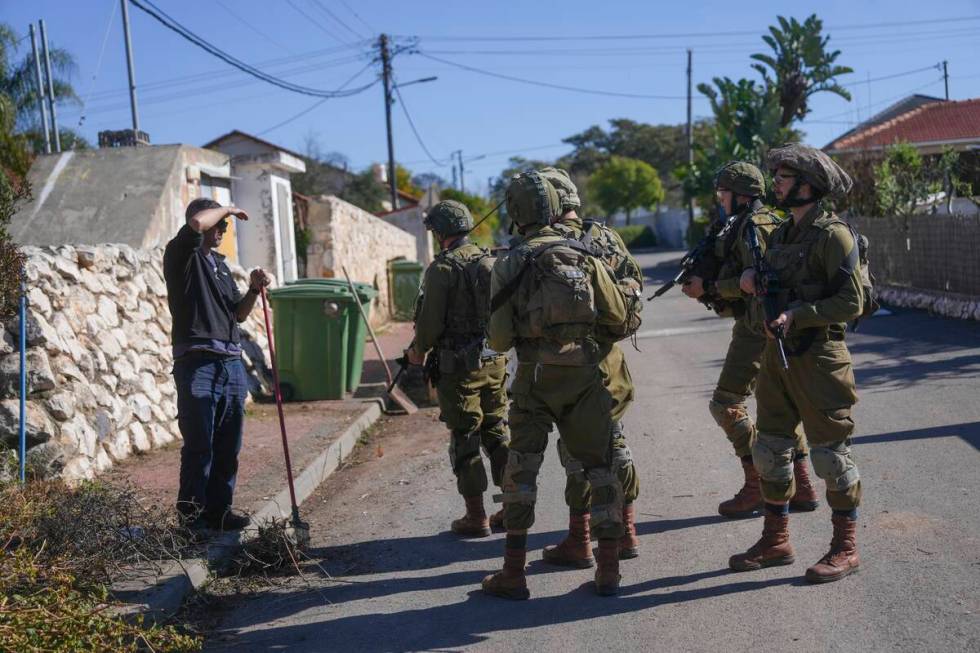Israel-Hezbollah truce is holding so far

BEIRUT — A fragile ceasefire between Israel and the Lebanese terrorist group Hezbollah has held up for over a month, even as its terms seem unlikely to be met by the agreed-upon deadline.
The deal struck on Nov. 27 to halt the war required Hezbollah to immediately lay down its arms in southern Lebanon and gave Israel 60 days to withdraw its forces there and hand over control to the Lebanese army and U.N. peacekeepers.
So far, Israel has withdrawn from just two of the dozens of towns it holds in southern Lebanon. And it has continued striking what it says are bases belonging to Hezbollah, which it accuses of attempting to launch rockets and move weapons before they can be confiscated and destroyed.
Hezbollah, which was severely diminished during nearly 14 months of war, has threatened to resume fighting if Israel does not fully withdraw its forces by the 60-day deadline.
Yet despite accusations from both sides about hundreds of ceasefire violations, the truce is likely to hold, analysts say. That is good news for thousands of Israeli and Lebanese families displaced by the war still waiting to return home.
“The ceasefire agreement is rather opaque and open to interpretation,” said Firas Maksad, a senior fellow with the Middle East Institute in Washington. That flexibility, he said, may give it a better chance of holding in the face of changing circumstances, including the ouster of Syria’s longtime leader, Bashar Assad, just days after the ceasefire took effect.
With Assad gone, Hezbollah lost a vital route for smuggling weapons from Iran. While that further weakened Hezbollah’s hand, Israel had already agreed to the U.S.-brokered ceasefire.
Hezbollah began firing rockets into Israel on Oct. 8, 2023 — the day after Hamas launched a deadly terrorist attack into Israel that ignited the ongoing war in Gaza. Since then, Israeli air and ground assaults have killed more than 4,000 people in Lebanon.
Hezbollah rockets forced some 60,000 from their homes in northern Israel, and killed 76 people in Israel, including 31 soldiers. Almost 50 Israeli soldiers were killed during operations inside Lebanon.
The agreement says that both Hezbollah and Israel will halt “offensive” military actions, but that they can act in self-defense, although it is not entirely clear how that term may be interpreted.
The Lebanese army is tasked with preventing Hezbollah and other groups from launching attacks into Israel. It is also required to dismantle Hezbollah facilities and weapons in southern Lebanon — activities that might eventually be expanded to the rest of Lebanon, although it is not explicit in the ceasefire agreement.
The United States, France, Israel, Lebanon and the U.N. peacekeeping force in Lebanon, known as UNIFIL, are responsible for overseeing implementation of the agreement.
Hezbollah has for the most part halted its rocket and drone fire into Israel, and Israel has stopped attacking Hezbollah in most areas of Lebanon. But Israel has launched regular airstrikes on what it says are military sites in southern Lebanon and in the Bekaa Valley.
Israeli forces have so far withdrawn from two towns in southern Lebanon: Khiam and Shamaa. They remain in some 60 others.
Israel’s withdrawal has been slower than anticipated because of a lack of Lebanese army troops ready to take over, according to Lt. Col. Nadav Shoshani, a military spokesman. Lebanon disputes this, and says it is waiting for Israel to withdraw before entering the towns.